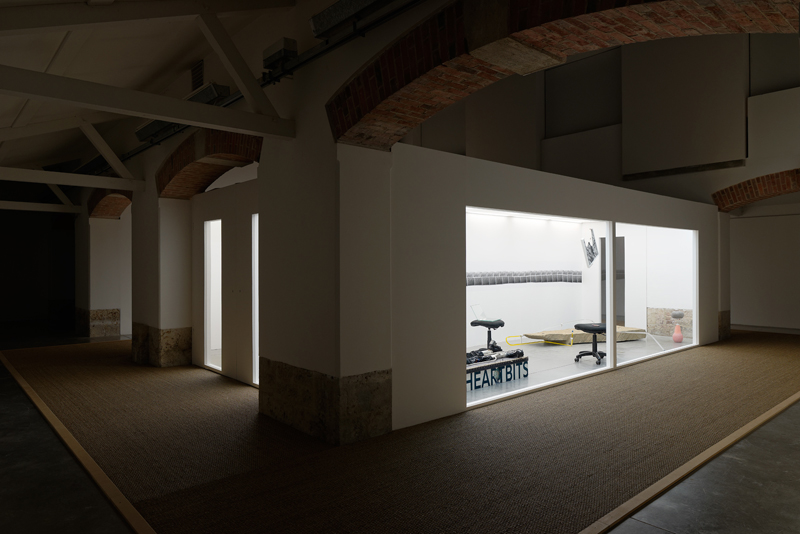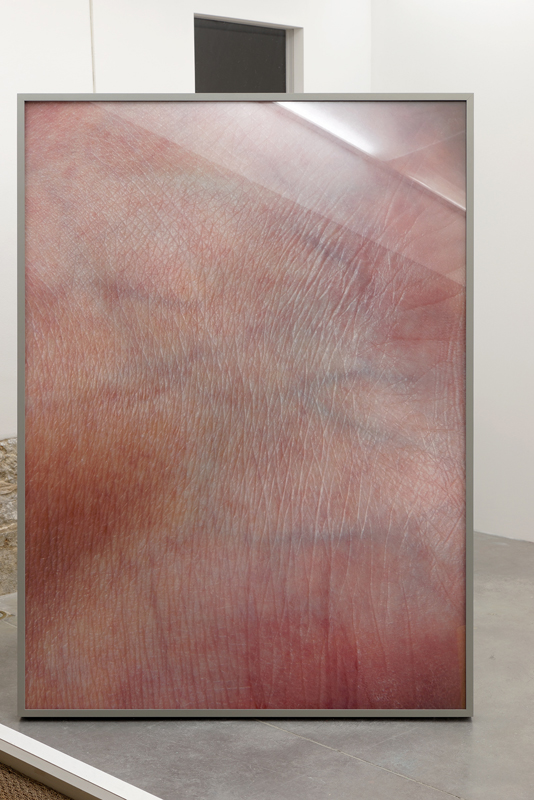
Rachel de Joode

Piero Gilardi
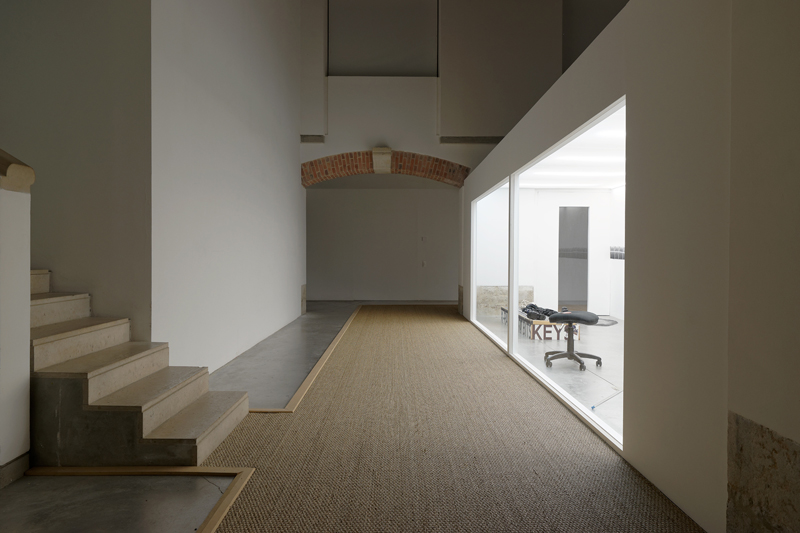
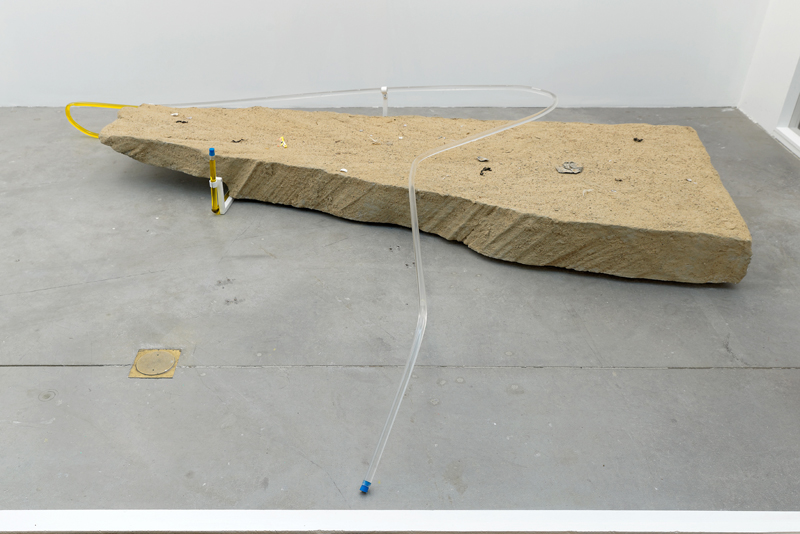
Anne de Vries
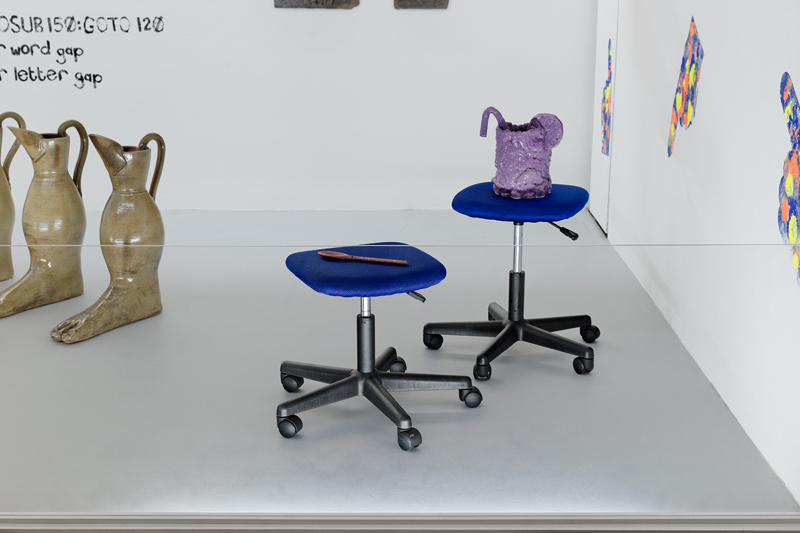
Foreground : Hayley Tompkins - Background : Bastien Aubry & Dimitri Broquard
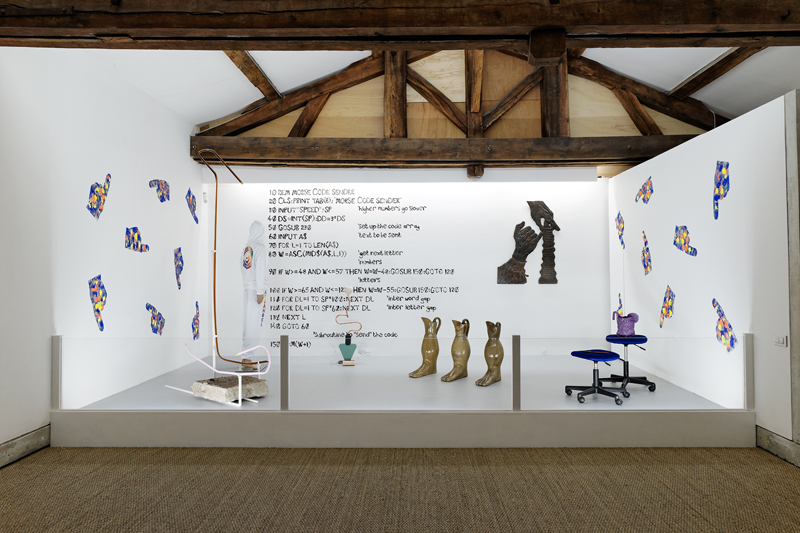
Vitrine 3

Foreground : Cory Arcangel - Background : Owen Piper
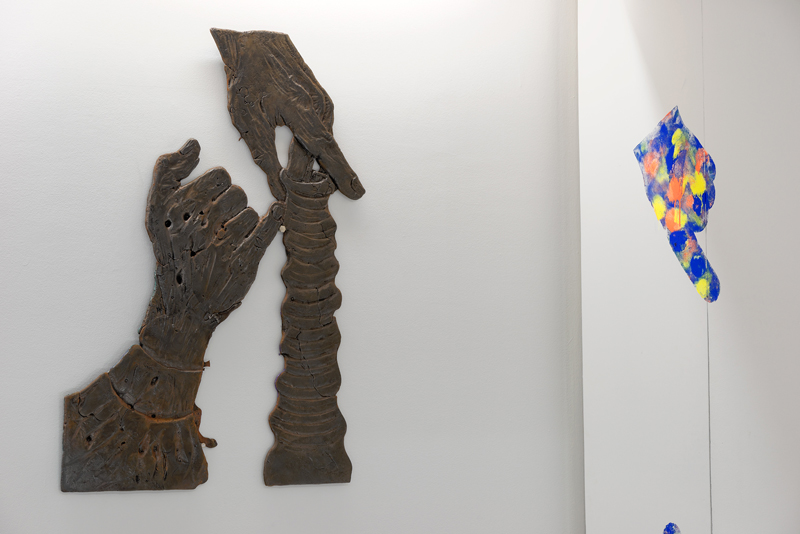
Left : Jean-Marie Appriou - Right : Owen Piper
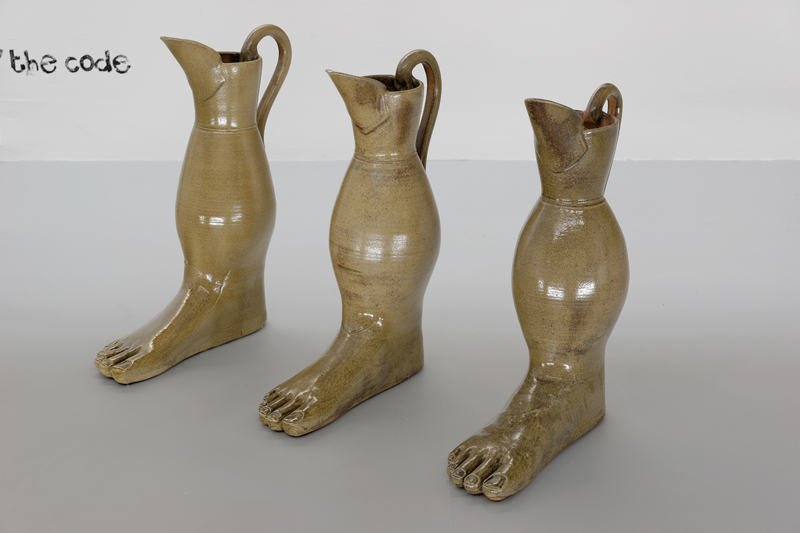
Dewar & Gicquel
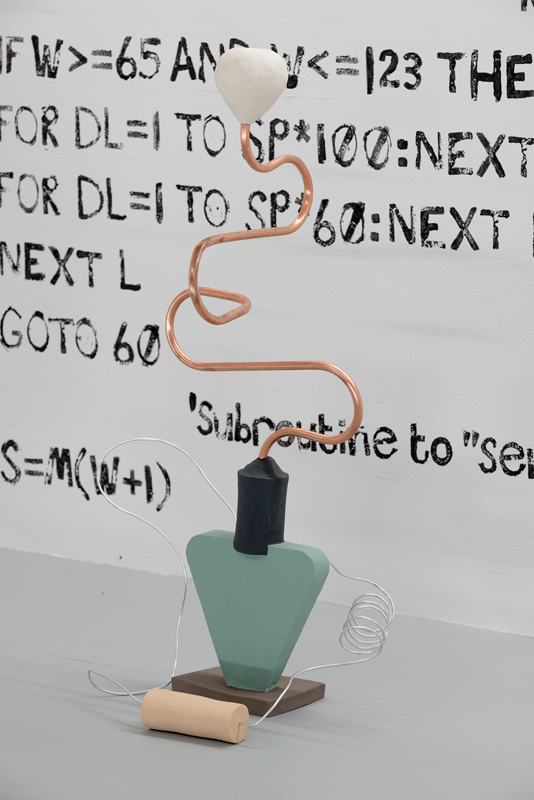
Foreground : Bevis Martin & Charlie Youle - Background : Owen Piper
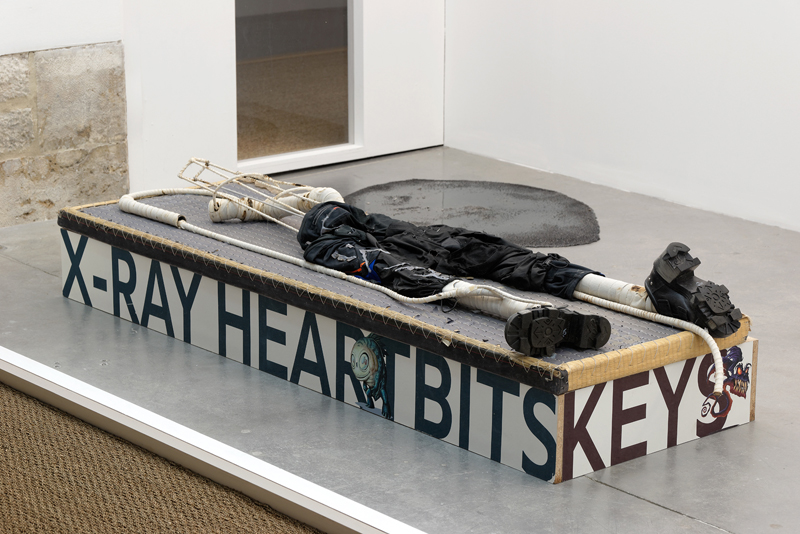
Foreground : Renaud Jerez - Background : Marlie Mul
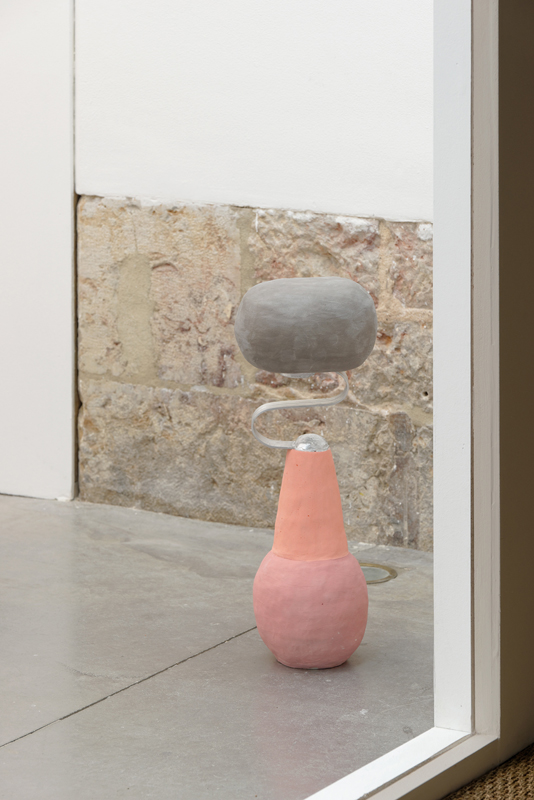

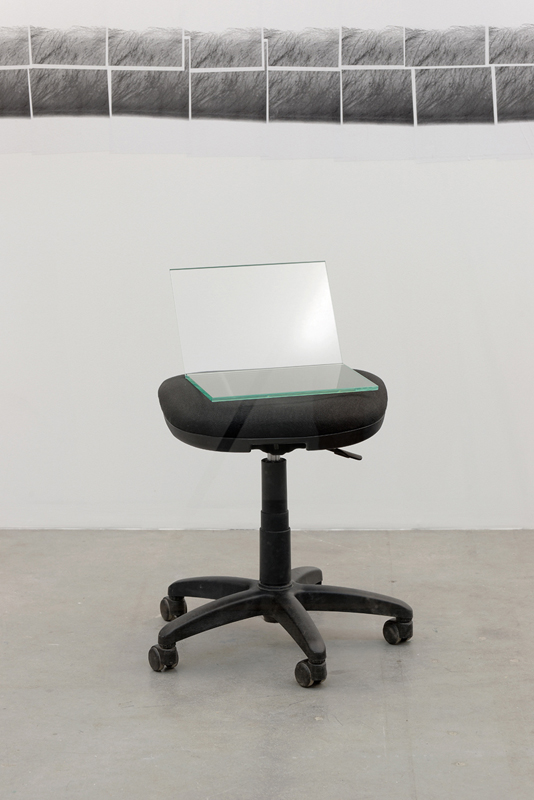
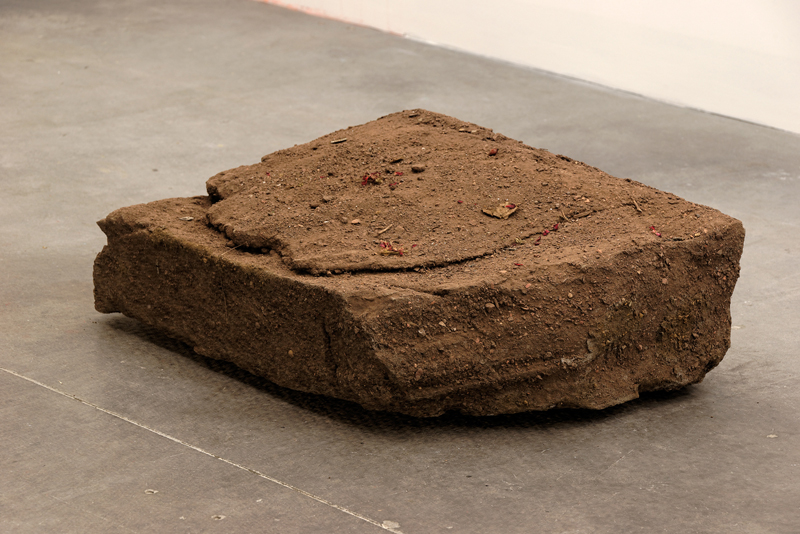
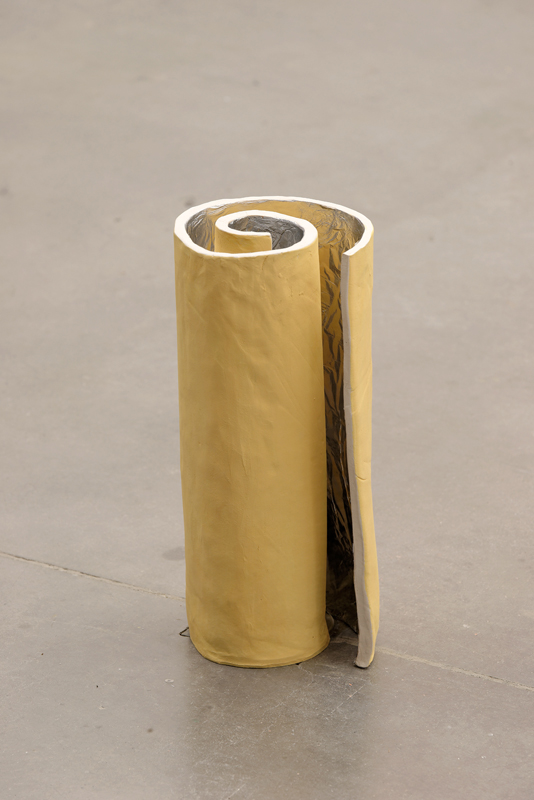
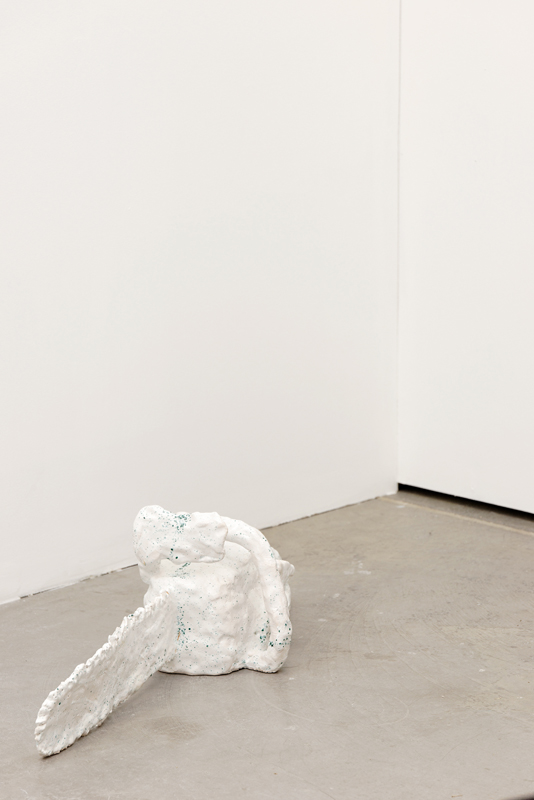
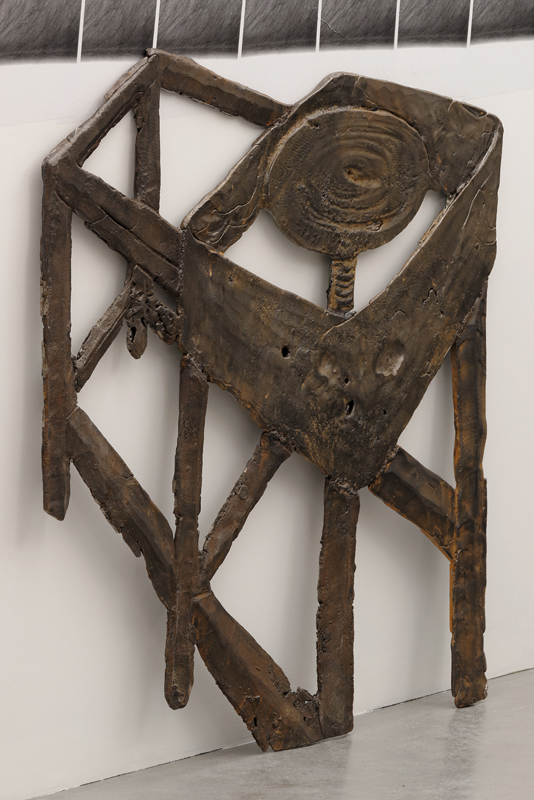

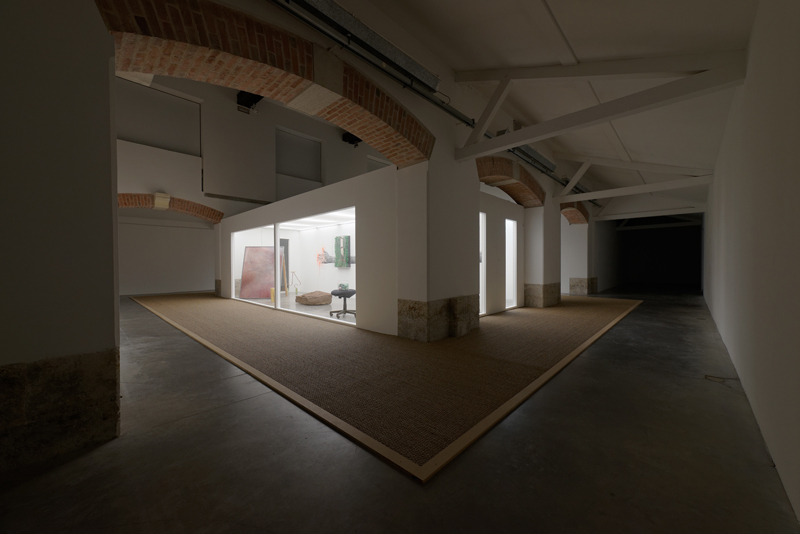
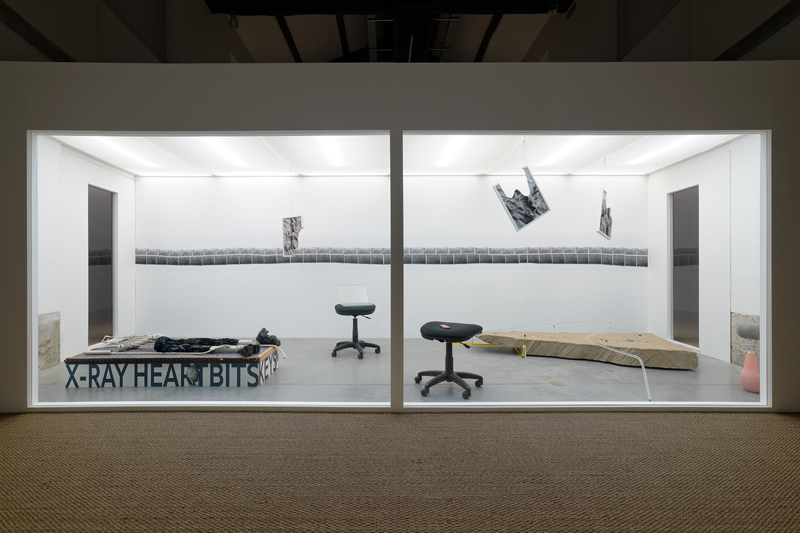
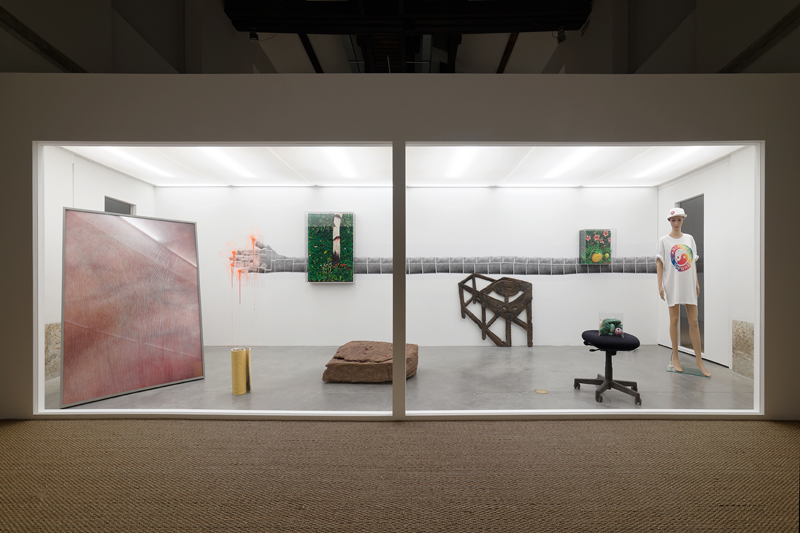
Vitrine 2
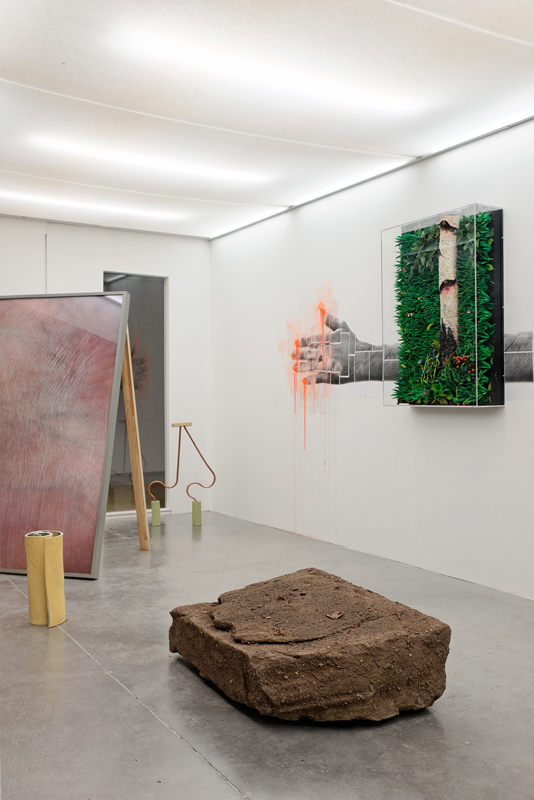
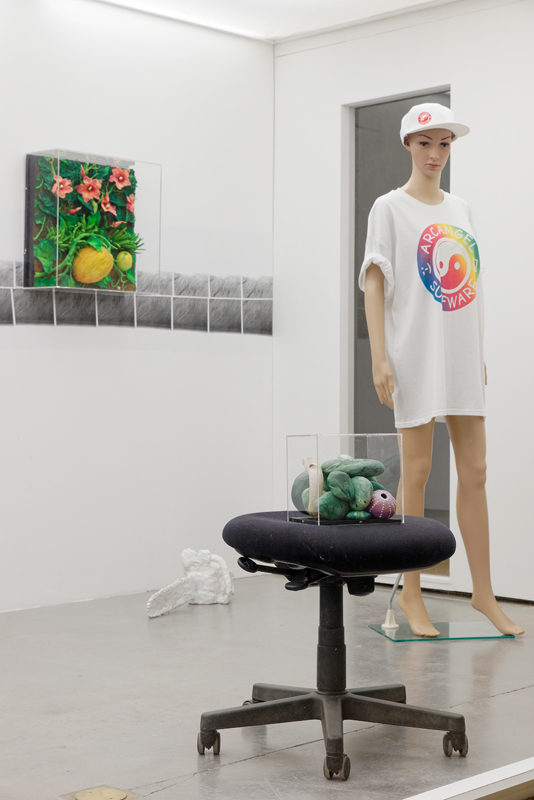
DEEP SCREEN En
Jean-Marie Appriou / Cory Arcangel / Bastien Aubry & Dimitri Broquard / Dewar & Gicquel / Piero Gilardi / Tilman Hornig / Renaud Jerez / Rachel de Joode / Bevis Martin & Charlie Youle / Marlie Mul / Owen Piper / Hayley Tompkins / Anne de Vries
14.03 - 24.05.2015 - Parc Saint Léger
“Deep Screen” proposes an in-depth exploration of the screens that now people our lives. In ever-growing numbers, computers, smartphones and tablets constitute a filter that is starting to replace the glass doors of galleries and other museums, and modify our perception of contemporary art. The idea of continuous depth in the exhibition’s subtitle clearly echoes the spatial dimension of the featured works. The expression is also employed here as the opposite of superficiality and characterizes each of the pieces displayed in Parc Saint Léger. Far from trying to champion virtual visits, the immersive style of “Deep Screen” invites flesh-and- blood visitors to an exhibition experience that is completely of the physical world.
Since the border between the real and the virtual is increasingly porous, many artists today consider the internet, with its cycles, networks, fluids, pollution, folklore, and beliefs, as their new natural milieu. In this ecosystem, the majority of the artworks move about freely, unconstrained by lighting or how they are positioned on display, dehierarchized, “liked,” shared, occasionally imitated, and living out an uninhibited existence in their documented form.
Borrowing the display-case exhibit form from museums devoted to popular arts and traditions,* “Deep Screen” presents a certain view of art in 2015 through a glass screen. These giant vivariums make it possible to conserve works of art within their glass walls, preserve them from change, and of course show them off to advantage, raising their cultural value. “Encasing” the show and keeping visitors at a remove inevitably induces a certain critical distance vis-à-vis a digital practice that may already have a whiff of outmodedness or obsolescence.
The diaramas can be seen as narrative collages blurring the borders between the natural world and an artificial arrangement, each one including works of different kinds posed before computer “wallpaper” designed by Owen Piper. Inside, a synthetic fantasized nature dreamed up by Piero Gilardi surrounds the postapocalyptic avatars created by Renaud Jerez and the display dummies sporting clothing from the Arcangel Surfware brand designed by the artist of the same name. The two latter artists, as well as Tilman Hornig, Marlie Mul, Anne de Vries, and Rachel de Joode, weave subtle ties with Post-Internet art** and demonstrate the attraction scientific phenomena, communication tools, flows, and organic materials exercise over a young generation of artists.
Some of them have chosen to pursue a manual practice inherited from traditional techniques that including ceramics, metal casting, and stone cutting. Jean-Marie Appriou, for example, poetically combines technical experiments with mythological references. Daniel Dewar & Gregory Gicquel engage in a very physical relationship with matter. Numerous handmade objects fashioned by Bastien Aubry & Dimitri Broquard, as well as Bevis Martin & Charlie Youle, evince an undisguised interest in experiencing classic, even ancestral techniques. Finally Hayley Tompkins’s practice is taking shape through painted everyday objects, symptomatic of a materialist excess.
We might see this collection of art works and objects from everyday life, along with the experimental methodology accompanying it, as a nonexhaustive ethnographic practice playing out at one and the same time in the thin layer of our smartphones’ screens and the depths of our memory.
“Deep Screen” sketches out the contours of a contemporary artistic folklore that is seizing on traditional techniques with the aim of taming new technologies. Laid out like a museum within a museum, the show proclaims its status as a laboratory,*** reducing the borders between a history of art in the process of being written and contemporary popular cultures.
Camille Le Houezec and Jocelyn Villemont
* The Musée national des arts et traditions populaires (MNATP) is a public institution founded in Paris in 1937 by the French museologist and museum innovator Georges Henri Rivière (1897-1985). This ethnology museum offered a synthesizing view of France’s traditional rural and artisanal society for the most part, from the nineteenth century to the 1960s.
** Post-Internet art is a school of art following in the wake of the democratization of the internet starting in the mid-2000s, reflecting the current hyperconnectivity. The term was proposed by the artist and theoretician Marisa Olson in 2008, and artists like Katja Novitskova, Brad Troemel, or Artie Vierkant have been narrowing and illustrating the concept since 2010. Post-Internet art differs from Net Art of the 1990s because of its existence outside digital networks. The term Post-Internet does not refer to a time that falls after the internet age, but rather describes a practice that places the system of diffusion, appropriation, and the free circulation of documents at the heart of the artistic process.
*** Laboratory-museum, a phrase dear to Georges Henri Rivière describing the Musée national des arts et traditions populaires and illustrating one of its many specificities, i.e., bringing together the museum’s curators and a team of researchers around the task of elaborating the museum’s collections.
Founded in 2009, the artist duo It’s Our Playground is made up of Camille Le Houezec and Jocelyn Villemont. IOP productions involve exhibitions, internet projects, stage design and installations with a particularity: they use curating as an art medium. IOP engages in an uninhibited reflection on display modes, exhibition devices, and the internet’s influence on contemporary life and output.
Since 2010, the website archives.itsourplayground.com has served as a portfolio of the duo’s activity in common, but it exists above all as an artist-run space on the internet that avoids the material constraints of a physical exhibition venue. IOP on-line projects deconstruct the hierarchy between various documents while questioning the digital presence of works of art.
From September 2012 to August 2014, IOP oversaw programing at SWG3 Gallery in Glasgow. The two artists currently live and work in Thorigny-sur-Marne.
Jean-Marie Appriou / Cory Arcangel / Bastien Aubry & Dimitri Broquard / Dewar & Gicquel / Piero Gilardi / Tilman Hornig / Renaud Jerez / Rachel de Joode / Bevis Martin & Charlie Youle / Marlie Mul / Owen Piper / Hayley Tompkins / Anne de Vries
14.03 - 24.05.2015 - Parc Saint Léger
“Deep Screen” proposes an in-depth exploration of the screens that now people our lives. In ever-growing numbers, computers, smartphones and tablets constitute a filter that is starting to replace the glass doors of galleries and other museums, and modify our perception of contemporary art. The idea of continuous depth in the exhibition’s subtitle clearly echoes the spatial dimension of the featured works. The expression is also employed here as the opposite of superficiality and characterizes each of the pieces displayed in Parc Saint Léger. Far from trying to champion virtual visits, the immersive style of “Deep Screen” invites flesh-and- blood visitors to an exhibition experience that is completely of the physical world.
Since the border between the real and the virtual is increasingly porous, many artists today consider the internet, with its cycles, networks, fluids, pollution, folklore, and beliefs, as their new natural milieu. In this ecosystem, the majority of the artworks move about freely, unconstrained by lighting or how they are positioned on display, dehierarchized, “liked,” shared, occasionally imitated, and living out an uninhibited existence in their documented form.
Borrowing the display-case exhibit form from museums devoted to popular arts and traditions,* “Deep Screen” presents a certain view of art in 2015 through a glass screen. These giant vivariums make it possible to conserve works of art within their glass walls, preserve them from change, and of course show them off to advantage, raising their cultural value. “Encasing” the show and keeping visitors at a remove inevitably induces a certain critical distance vis-à-vis a digital practice that may already have a whiff of outmodedness or obsolescence.
The diaramas can be seen as narrative collages blurring the borders between the natural world and an artificial arrangement, each one including works of different kinds posed before computer “wallpaper” designed by Owen Piper. Inside, a synthetic fantasized nature dreamed up by Piero Gilardi surrounds the postapocalyptic avatars created by Renaud Jerez and the display dummies sporting clothing from the Arcangel Surfware brand designed by the artist of the same name. The two latter artists, as well as Tilman Hornig, Marlie Mul, Anne de Vries, and Rachel de Joode, weave subtle ties with Post-Internet art** and demonstrate the attraction scientific phenomena, communication tools, flows, and organic materials exercise over a young generation of artists.
Some of them have chosen to pursue a manual practice inherited from traditional techniques that including ceramics, metal casting, and stone cutting. Jean-Marie Appriou, for example, poetically combines technical experiments with mythological references. Daniel Dewar & Gregory Gicquel engage in a very physical relationship with matter. Numerous handmade objects fashioned by Bastien Aubry & Dimitri Broquard, as well as Bevis Martin & Charlie Youle, evince an undisguised interest in experiencing classic, even ancestral techniques. Finally Hayley Tompkins’s practice is taking shape through painted everyday objects, symptomatic of a materialist excess.
We might see this collection of art works and objects from everyday life, along with the experimental methodology accompanying it, as a nonexhaustive ethnographic practice playing out at one and the same time in the thin layer of our smartphones’ screens and the depths of our memory.
“Deep Screen” sketches out the contours of a contemporary artistic folklore that is seizing on traditional techniques with the aim of taming new technologies. Laid out like a museum within a museum, the show proclaims its status as a laboratory,*** reducing the borders between a history of art in the process of being written and contemporary popular cultures.
Camille Le Houezec and Jocelyn Villemont
* The Musée national des arts et traditions populaires (MNATP) is a public institution founded in Paris in 1937 by the French museologist and museum innovator Georges Henri Rivière (1897-1985). This ethnology museum offered a synthesizing view of France’s traditional rural and artisanal society for the most part, from the nineteenth century to the 1960s.
** Post-Internet art is a school of art following in the wake of the democratization of the internet starting in the mid-2000s, reflecting the current hyperconnectivity. The term was proposed by the artist and theoretician Marisa Olson in 2008, and artists like Katja Novitskova, Brad Troemel, or Artie Vierkant have been narrowing and illustrating the concept since 2010. Post-Internet art differs from Net Art of the 1990s because of its existence outside digital networks. The term Post-Internet does not refer to a time that falls after the internet age, but rather describes a practice that places the system of diffusion, appropriation, and the free circulation of documents at the heart of the artistic process.
*** Laboratory-museum, a phrase dear to Georges Henri Rivière describing the Musée national des arts et traditions populaires and illustrating one of its many specificities, i.e., bringing together the museum’s curators and a team of researchers around the task of elaborating the museum’s collections.
Founded in 2009, the artist duo It’s Our Playground is made up of Camille Le Houezec and Jocelyn Villemont. IOP productions involve exhibitions, internet projects, stage design and installations with a particularity: they use curating as an art medium. IOP engages in an uninhibited reflection on display modes, exhibition devices, and the internet’s influence on contemporary life and output.
Since 2010, the website archives.itsourplayground.com has served as a portfolio of the duo’s activity in common, but it exists above all as an artist-run space on the internet that avoids the material constraints of a physical exhibition venue. IOP on-line projects deconstruct the hierarchy between various documents while questioning the digital presence of works of art.
From September 2012 to August 2014, IOP oversaw programing at SWG3 Gallery in Glasgow. The two artists currently live and work in Thorigny-sur-Marne.
DEEP SCREEN Fr
Jean-Marie Appriou / Cory Arcangel / Bastien Aubry & Dimitri Broquard / Dewar & Gicquel / Piero Gilardi / Tilman Hornig / Renaud Jerez / Rachel de Joode / Bevis Martin & Charlie Youle / Marlie Mul / Owen Piper / Hayley Tompkins / Anne de Vries
14.03 - 24.05.2015 - Parc Saint Léger
« Deep Screen » propose une exploration en profondeur des écrans qui peuplent maintenant nos vies. De plus en plus nombreux, ordinateurs, smartphones et tablettes constituent un filtre qui tend à remplacer les portes vitrées des galeries et autres musées et modifient notre perception de l’art contemporain. L’idée de profondeur contenue dans le sous-titre de l’exposition fait évidemment écho à la dimension spatiale des œuvres. Ce terme est aussi employé ici comme contraire de la superficialité et caractérise chacune des œuvres présentées au Parc Saint Léger. Loin de faire l’apologie des visites virtuelles, le dispositif immersif de « Deep Screen » invite à une expérience de l’exposition toute en matérialité.
La frontière entre réel et virtuel étant de plus en plus poreuse, de nombreux artistes considèrent aujourd’hui Internet comme leur nouveau milieu naturel avec ses cycles, ses réseaux, ses fluides, sa pollution, son folklore, ses croyances. Dans cet écosystème, la majorité des œuvres évoluent librement, sans contraintes d’éclairage ou de placement, déhiérarchisées, « likées », partagées, parfois imitées et vivant une existence décomplexée sous leur forme documentée.
Empruntant au musée des arts et traditions populaires* un mode de présentation sous forme de vitrines, « Deep Screen » présente une certaine vision de l’art en 2015 vue au travers d’un écran de verre. Ce dispositif permet aux œuvres d’y être conservées, de les préserver de l’altération et bien entendu de les valoriser. La « mise en boite » de cette exposition tenant le visiteur à distance induit donc nécessairement un certain recul sur une pratique digitale peut-être déjà empreinte de désuétude.
Envisagés comme des collages narratifs brouillant les frontières entre monde naturel et dispositif artificiel, chaque tableau comprend des œuvres de nature différente évoluant devant des « fonds d’écran » conçus par Owen Piper. À l’intérieur de ces dioramas, une nature synthétique, fantasmée et designée par Piero Gilardi entoure les avatars post-apocalyptiques de Renaud Jerez et les mannequins de vitrine arborant les vêtements de la gamme Arcangel Surfware conçue par l’artiste du même nom. Ces deux derniers ainsi que Tilman Hornig, Marlie Mul, Anne de Vries ou encore Rachel de Joode tissent des liens esthétiques ténus avec l’art Post-Internet** et démontrent l’attrait d’une jeune génération d’artistes pour les phénomènes scientifiques, les outils de communication, les flux ou encore les matières organiques.
Certain des artistes ont choisi de poursuivre une pratique manuelle héritée de savoir-faire traditionnels (céramique, fonderie, taille de pierre…). Ainsi Jean-Marie Appriou associe avec poésie des expérimentations techniques à des références mythologiques. Daniel Dewar & Gregory Gicquel, quant à eux, sont engagés dans un rapport physique avec la matière. Les nombreux objets faits-main réalisés par Bastien Aubry & Dimitri Broquard ainsi que Bevis Martin & Charlie Youle témoignent d’un intérêt non dissimulé pour l’expérimentation de techniques classiques voir ancestrales. La pratique de Hayley Tompkins, pour sa part, évolue à travers des objets usuels peints, symptomatiques d’un trop plein matérialiste.
Cette collection d’œuvres d’art et d’objets du quotidien ainsi que la méthodologie expérimentale qui l’accompagne pourrait être considérée comme une pratique ethnographique non-exhaustive se jouant à la fois dans l’épaisseur de l’écran de notre smartphone et les profondeurs de notre mémoire. « Deep Screen » dessine les contours d’un folklore artistique contemporain s’emparant des techniques traditionnelles dans le but d’apprivoiser les nouvelles technologies. Conçue comme un musée dans le musée, l’exposition revendique son statut de laboratoire*** atténuant les frontières entre une histoire de l’art en train de s’écrire et les cultures populaires contemporaines.
Camille Le Houezec et Jocelyn Villemont
* Le musée national des arts et traditions populaires (MNATP) est un établissement public fondé à Paris en 1937 par le muséologue français Georges-Henri Rivière (1897-1985). Ce musée d’ethnologie présentait une vision synthétique de la société française traditionnelle, rurale et artisanale pour l’essentiel, depuis le XIXème siècle jusqu’aux années 1960.
** L’art Post-Internet : courant artistique qui suivit la démocratisation d’Internet à partir du milieu des années 2000, témoignant de l’hyper-connectivité actuelle. Le terme est énoncé par l’artiste et théoricienne Marisa Olson en 2008 et sera précisé par des artistes comme Katja Novitskova, Brad Troemel ou encore Artie Vierkant à partir de 2010. L’art Post-Internet se différencie du Net-Art des années 1990 par une existence en dehors des réseaux numériques. Le terme de Post-Internet ne renvoie pas à un temps qui serait postérieur à l’ère Internet, mais décrit une pratique qui place le système de diffusion, d’appropriation et de libre circulation des documents au cœur du processus de création.
*** Musée-laboratoire : formule chère à Georges-Henri Rivière qualifiant le musée national des arts et traditions populaires et illustrant l’une de ses nombreuses spécificités, celle d’associer aux conservateurs une équipe de chercheurs autour de l’élaboration des collections.
Formé en 2009, It’s Our Playground est un duo d’artistes composé de Camille Le Houezec et Jocelyn Villemont. Les productions de IOP prennent majoritairement la forme d’expositions, de projets sur internet, de scénograhies ou d’installations ayant la particularité d’utiliser le curating comme un médium. IOP poursuit une réflexion décomplexée sur les modes de présentation, les dispositifs d’exposition et l’influence d’internet sur la vie et la production contemporaine.
Depuis 2010, le website archives.itsourplayground.com se présente comme le portfolio de leur activité commune mais il est avant tout un espace d’expérimentations sur internet s’affranchissant des contraintes matérielles d’un lieu d’exposition physique. Les projets en ligne d’IOP déconstruisent la hiérarchie entre les divers documents et interrogent la présence digitale des œuvres d’art.
De septembre 2012 à août 2014, IOP a assuré la programmation de SWG3 Gallery à Glasgow. Ils vivent et travaillent actuellement à Thorigny sur Marne.
Jean-Marie Appriou / Cory Arcangel / Bastien Aubry & Dimitri Broquard / Dewar & Gicquel / Piero Gilardi / Tilman Hornig / Renaud Jerez / Rachel de Joode / Bevis Martin & Charlie Youle / Marlie Mul / Owen Piper / Hayley Tompkins / Anne de Vries
14.03 - 24.05.2015 - Parc Saint Léger
« Deep Screen » propose une exploration en profondeur des écrans qui peuplent maintenant nos vies. De plus en plus nombreux, ordinateurs, smartphones et tablettes constituent un filtre qui tend à remplacer les portes vitrées des galeries et autres musées et modifient notre perception de l’art contemporain. L’idée de profondeur contenue dans le sous-titre de l’exposition fait évidemment écho à la dimension spatiale des œuvres. Ce terme est aussi employé ici comme contraire de la superficialité et caractérise chacune des œuvres présentées au Parc Saint Léger. Loin de faire l’apologie des visites virtuelles, le dispositif immersif de « Deep Screen » invite à une expérience de l’exposition toute en matérialité.
La frontière entre réel et virtuel étant de plus en plus poreuse, de nombreux artistes considèrent aujourd’hui Internet comme leur nouveau milieu naturel avec ses cycles, ses réseaux, ses fluides, sa pollution, son folklore, ses croyances. Dans cet écosystème, la majorité des œuvres évoluent librement, sans contraintes d’éclairage ou de placement, déhiérarchisées, « likées », partagées, parfois imitées et vivant une existence décomplexée sous leur forme documentée.
Empruntant au musée des arts et traditions populaires* un mode de présentation sous forme de vitrines, « Deep Screen » présente une certaine vision de l’art en 2015 vue au travers d’un écran de verre. Ce dispositif permet aux œuvres d’y être conservées, de les préserver de l’altération et bien entendu de les valoriser. La « mise en boite » de cette exposition tenant le visiteur à distance induit donc nécessairement un certain recul sur une pratique digitale peut-être déjà empreinte de désuétude.
Envisagés comme des collages narratifs brouillant les frontières entre monde naturel et dispositif artificiel, chaque tableau comprend des œuvres de nature différente évoluant devant des « fonds d’écran » conçus par Owen Piper. À l’intérieur de ces dioramas, une nature synthétique, fantasmée et designée par Piero Gilardi entoure les avatars post-apocalyptiques de Renaud Jerez et les mannequins de vitrine arborant les vêtements de la gamme Arcangel Surfware conçue par l’artiste du même nom. Ces deux derniers ainsi que Tilman Hornig, Marlie Mul, Anne de Vries ou encore Rachel de Joode tissent des liens esthétiques ténus avec l’art Post-Internet** et démontrent l’attrait d’une jeune génération d’artistes pour les phénomènes scientifiques, les outils de communication, les flux ou encore les matières organiques.
Certain des artistes ont choisi de poursuivre une pratique manuelle héritée de savoir-faire traditionnels (céramique, fonderie, taille de pierre…). Ainsi Jean-Marie Appriou associe avec poésie des expérimentations techniques à des références mythologiques. Daniel Dewar & Gregory Gicquel, quant à eux, sont engagés dans un rapport physique avec la matière. Les nombreux objets faits-main réalisés par Bastien Aubry & Dimitri Broquard ainsi que Bevis Martin & Charlie Youle témoignent d’un intérêt non dissimulé pour l’expérimentation de techniques classiques voir ancestrales. La pratique de Hayley Tompkins, pour sa part, évolue à travers des objets usuels peints, symptomatiques d’un trop plein matérialiste.
Cette collection d’œuvres d’art et d’objets du quotidien ainsi que la méthodologie expérimentale qui l’accompagne pourrait être considérée comme une pratique ethnographique non-exhaustive se jouant à la fois dans l’épaisseur de l’écran de notre smartphone et les profondeurs de notre mémoire. « Deep Screen » dessine les contours d’un folklore artistique contemporain s’emparant des techniques traditionnelles dans le but d’apprivoiser les nouvelles technologies. Conçue comme un musée dans le musée, l’exposition revendique son statut de laboratoire*** atténuant les frontières entre une histoire de l’art en train de s’écrire et les cultures populaires contemporaines.
Camille Le Houezec et Jocelyn Villemont
* Le musée national des arts et traditions populaires (MNATP) est un établissement public fondé à Paris en 1937 par le muséologue français Georges-Henri Rivière (1897-1985). Ce musée d’ethnologie présentait une vision synthétique de la société française traditionnelle, rurale et artisanale pour l’essentiel, depuis le XIXème siècle jusqu’aux années 1960.
** L’art Post-Internet : courant artistique qui suivit la démocratisation d’Internet à partir du milieu des années 2000, témoignant de l’hyper-connectivité actuelle. Le terme est énoncé par l’artiste et théoricienne Marisa Olson en 2008 et sera précisé par des artistes comme Katja Novitskova, Brad Troemel ou encore Artie Vierkant à partir de 2010. L’art Post-Internet se différencie du Net-Art des années 1990 par une existence en dehors des réseaux numériques. Le terme de Post-Internet ne renvoie pas à un temps qui serait postérieur à l’ère Internet, mais décrit une pratique qui place le système de diffusion, d’appropriation et de libre circulation des documents au cœur du processus de création.
*** Musée-laboratoire : formule chère à Georges-Henri Rivière qualifiant le musée national des arts et traditions populaires et illustrant l’une de ses nombreuses spécificités, celle d’associer aux conservateurs une équipe de chercheurs autour de l’élaboration des collections.
Formé en 2009, It’s Our Playground est un duo d’artistes composé de Camille Le Houezec et Jocelyn Villemont. Les productions de IOP prennent majoritairement la forme d’expositions, de projets sur internet, de scénograhies ou d’installations ayant la particularité d’utiliser le curating comme un médium. IOP poursuit une réflexion décomplexée sur les modes de présentation, les dispositifs d’exposition et l’influence d’internet sur la vie et la production contemporaine.
Depuis 2010, le website archives.itsourplayground.com se présente comme le portfolio de leur activité commune mais il est avant tout un espace d’expérimentations sur internet s’affranchissant des contraintes matérielles d’un lieu d’exposition physique. Les projets en ligne d’IOP déconstruisent la hiérarchie entre les divers documents et interrogent la présence digitale des œuvres d’art.
De septembre 2012 à août 2014, IOP a assuré la programmation de SWG3 Gallery à Glasgow. Ils vivent et travaillent actuellement à Thorigny sur Marne.
